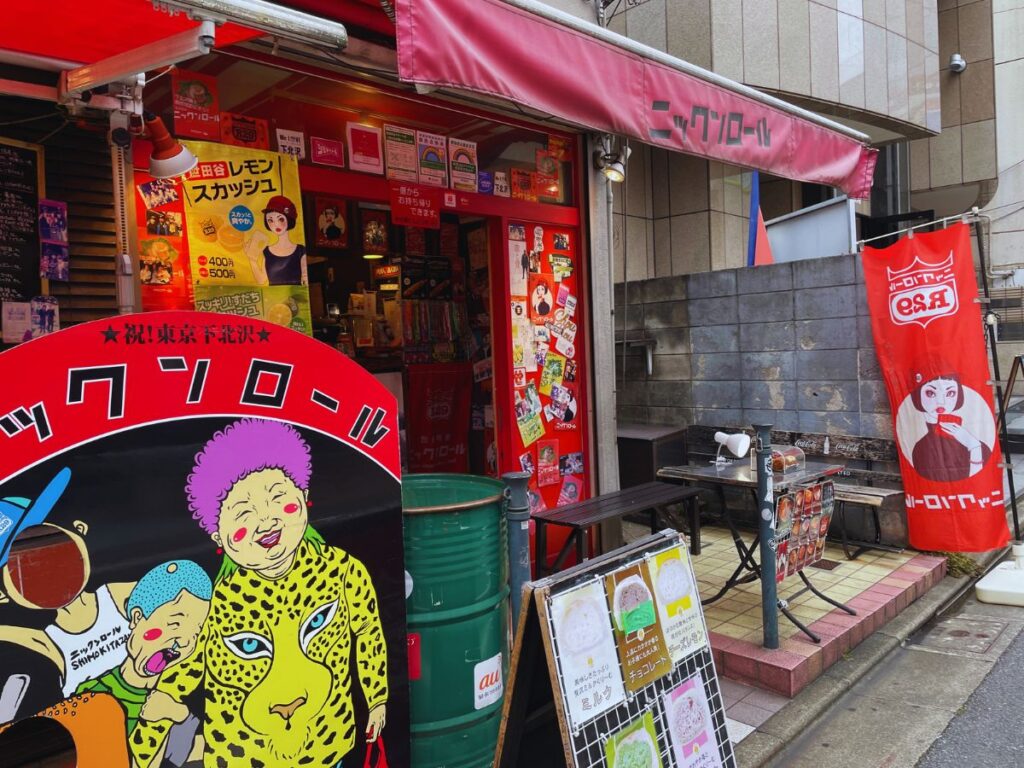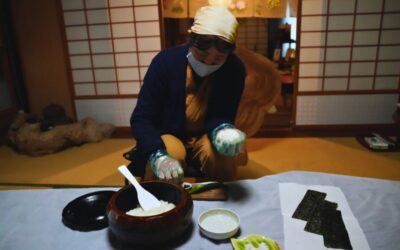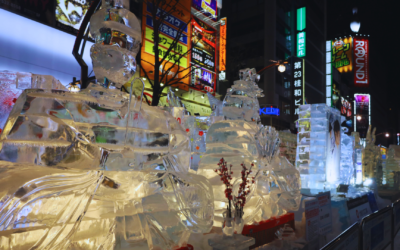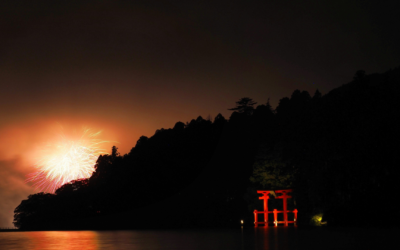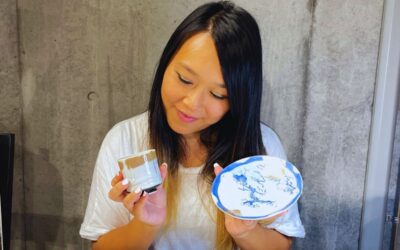We all love a bit of Shibuya chaos or a Harajuku photo op, but let’s be real — Tokyo’s magic really shows up when you step off the tourist track and into the local neighbourhoods where people actually live, hang out, and do life. The kind of places with tiny cafes, second-hand shops, sleepy backstreets, and just enough weirdness to keep things interesting.
If you’re here for a few days, or you’re the kind of traveller who starts every trip thinking, “Could I move here?”, these are the Tokyo neighbourhoods to visit for seeing a softer, cooler, more local side of Tokyo.
1. Koenji (高円寺)

Koenji is gritty in the best possible way. It’s the kind of place that wears its quirks proudly — a little rough around the edges, full of energy, and totally unapologetic about being itself.
It has deep roots in Tokyo’s underground scene, with a long-standing love for punk music, DIY culture, and all things second-hand. You’ll see this in the record stores crammed with vinyl, in the bars plastered with gig posters, and in the fashion that feels like a glorious mish-mash of decades.

This neighbourhood is a total playground for vintage lovers. You’ll find shop after shop packed with retro jackets, graphic tees, old-school jeans, and the kind of pieces that look like they’ve lived a few lives already.
And it’s not just fashion — there are stores selling antiques, trinkets, books, and random oddities you didn’t know you needed. The prices are way more down-to-earth compared to flashier areas like Harajuku or Shibuya, so it’s easy to come away with a solid haul without breaking the bank.
But Koenji isn’t just for daytime wandering. At night, it transforms into one of the most vibrant (but still very local) nightlife spots in Tokyo. The streets near the station are full of cosy izakayas, tiny standing bars, and live houses where you can catch indie bands and experimental acts.
It’s not polished or perfect, and that’s kind of the point — Koenji feels real. If you’re up for a bit of organised chaos and want a taste of Tokyo’s creative, slightly rebellious spirit, this is where to find it.
2. Shimokitazawa (下北沢)
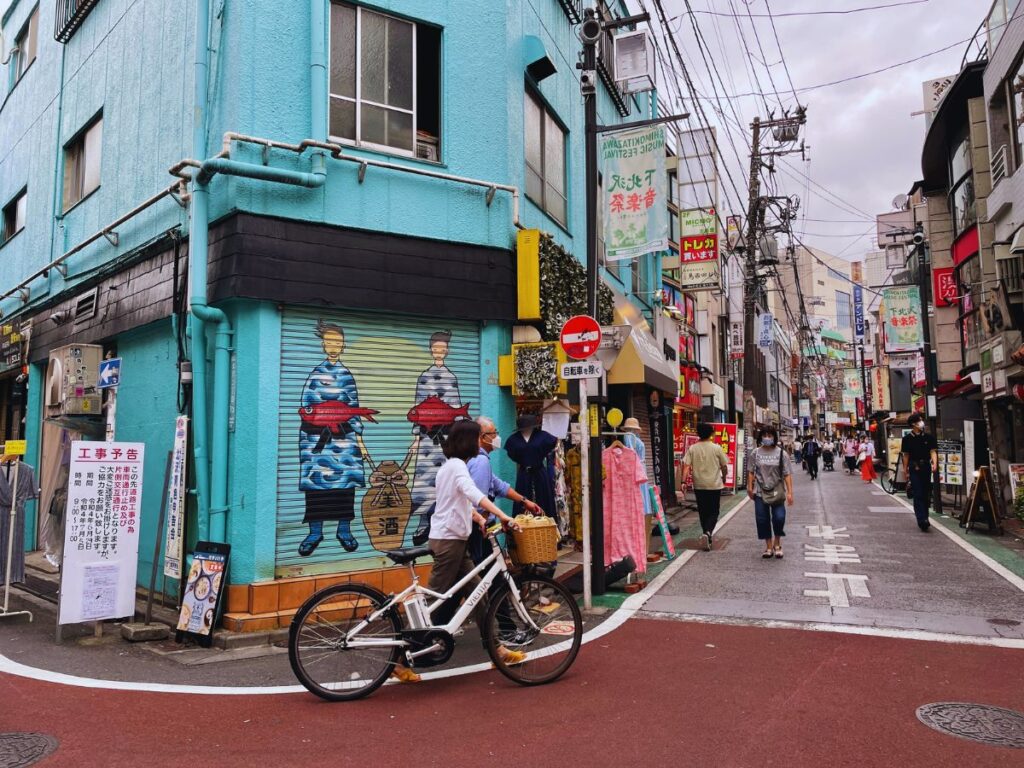
Shimokitazawa — or Shimokita, as locals casually call it — is Tokyo’s indie darling. This laid-back neighbourhood has long been a hub for artists, musicians, and creative types, and the vibe is instantly different from the city’s flashier districts.
It’s the kind of place where people take their time. You’ll see it in the pace of the pedestrians, the slow sipping of coffee in quiet cafes, and the way every corner seems to have a little story or surprise.
The streets are narrow and maze-like, packed with second-hand shops that range from super curated boutiques to dusty treasure troves. If you’re into thrifting, this is heaven — expect to find vintage denim, oversized coats, quirky accessories, and clothes with actual personality.
And once you’ve shopped yourself silly, there are loads of cafes and bakeries where you can take a breather. From minimalist coffee stands to plant-filled hideouts serving perfect matcha lattes, the cafe culture here is strong.
What really makes Shimokita special is its community feel. Despite its popularity, it still manages to feel local and welcoming. There’s a strong theatre scene, with small venues showing everything from classic plays to experimental performances. Street musicians and pop-up markets add to the atmosphere, and there’s always something happening — but never in an overwhelming way.
3. Yanaka (谷中)
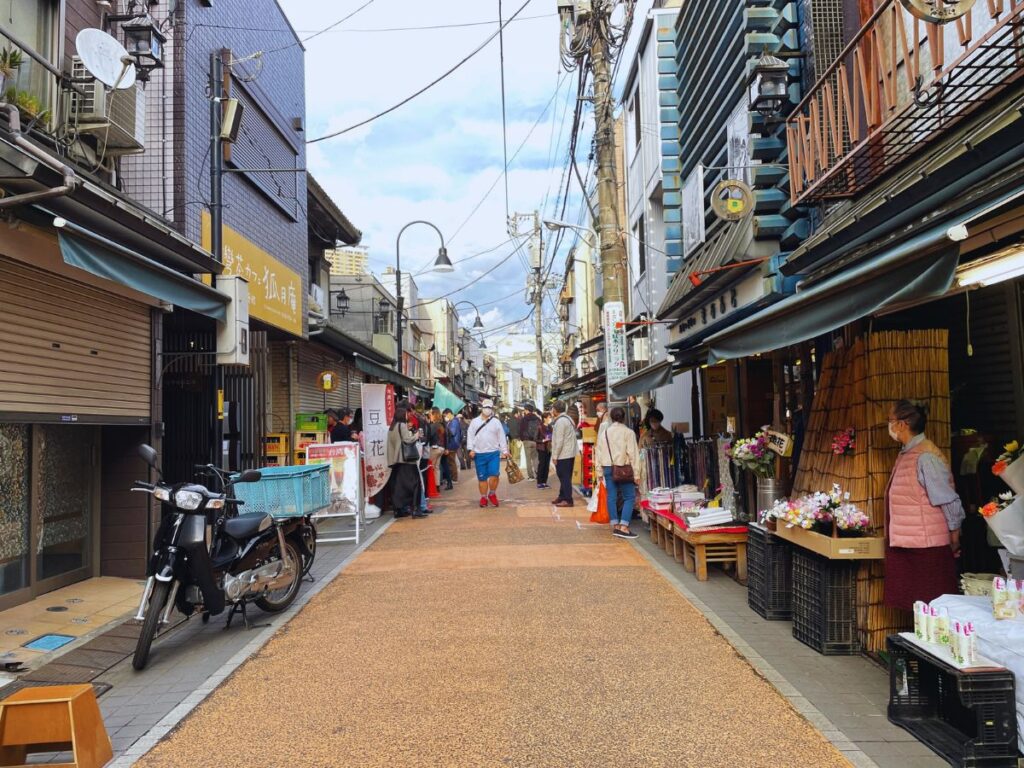
Yanaka is like stepping into a parallel version of Tokyo — one that didn’t get swept up in the city’s post-war rebuild or the never-ending race to modernise.
It’s quiet, old-fashioned, and full of charm, with narrow backstreets, wooden houses, and little corners that look like they haven’t changed in decades. It somehow escaped the high-rise boom, so walking through it feels more like being in a small countryside town than in one of the world’s biggest cities.
One of the highlights here is Yanaka Ginza, a traditional shopping street that oozes retro vibes. You’ll find street food stalls selling things like croquettes, yakitori, and sweet potato snacks, alongside shops offering handmade crafts, local tea, and cat-themed souvenirs (because yes — the area is famously cat-obsessed).
The shops are mostly small, family-run places that have been around for generations, which makes it feel even more personal and welcoming.
This is the kind of neighbourhood that rewards slow wandering. There are temples and shrines hidden in the backstreets, a massive cemetery that’s oddly peaceful and beautiful to walk through, and lots of little photo-worthy spots around every corner.
4. Jimbocho (神保町)
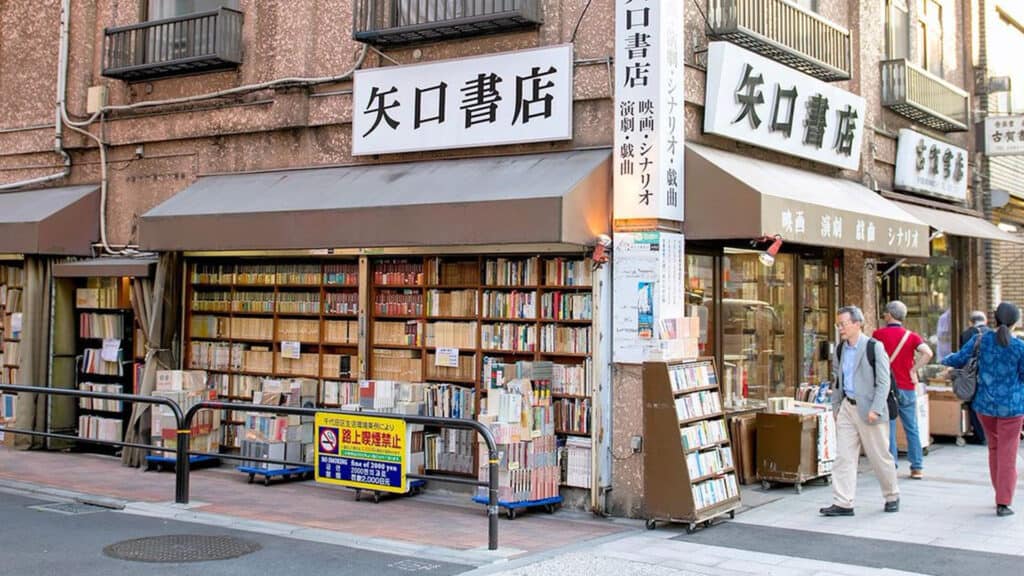
Jimbocho is Tokyo’s ultimate destination for book lovers — a neighbourhood where the scent of old paper practically hangs in the air.
Known as the city’s “book town,” it’s home to dozens (and we mean dozens) of second-hand bookstores packed to the brim with everything from classic Japanese literature to vintage comics, out-of-print academic texts, art books, and forgotten pulp fiction. If you’re the kind of person who likes browsing shelves without knowing exactly what you’re looking for, this place will ruin you in the best way.
The vibe here is super nostalgic. A lot of the shops have been around for decades, and some feel like time capsules — creaky wooden floors, yellowed signage, and piles of books stacked so high you’re kind of amazed the whole place hasn’t toppled over. Even if you don’t read Japanese, it’s still fun to flick through old photo books or vintage manga and soak up the atmosphere.
And when you need a break from all the browsing, Jimbocho also happens to have a legendary curry scene. Many of the cafes and restaurants in the area have been serving up Japanese-style curry rice for years, and some are practically institutions.
It’s not a flashy area, and that’s the whole appeal. Jimbocho feels quiet and contemplative, like it’s built for rainy afternoons and slow Sundays. It’s the perfect place to go when you want to escape Tokyo’s hyper-speed pace and spend a few hours just wandering, reading, and eating something warm.
5. Kichijoji (吉祥寺)

Kichijoji is one of those places that seems to have everything — and somehow makes it all work without feeling overwhelming. It’s got the energy of a busy Tokyo hub, but with enough nature and charm to give it a totally different vibe from the city centre. Locals love it, visitors are often surprised by how lively yet relaxed it feels, and it’s the kind of spot you’ll want to keep coming back to.
The real heart of it is Inokashira Park — a big, beautiful green space that’s just a few minutes from the station, where you can rent a swan boat, watch buskers, spot turtles in the pond, or just lay under the trees with a snack.
But Kichijoji isn’t just about the park. The surrounding area is packed with indie shops, back-alley eateries, vintage stores, and quirky attractions. There’s a little bit of everything — from trendy plant shops and retro cafes to jazz bars and noodle joints that locals have sworn by for decades.

One moment you’re browsing handmade pottery, the next you’re walking down Harmonica Yokocho, a narrow, atmospheric alleyway crammed with tiny izakayas and old-school bars where you can grab a beer and chat with regulars. It’s cosy, bustling, and full of personality.
It’s also a great area to visit if you’re travelling with others but want to do your own thing. There’s enough variety for everyone — you can explore the Ghibli Museum nearby if you book ahead, do a little shopping around Sunroad or Atre, or just find a bench and enjoy some people-watching.
6. Nakameguro (中目黒)
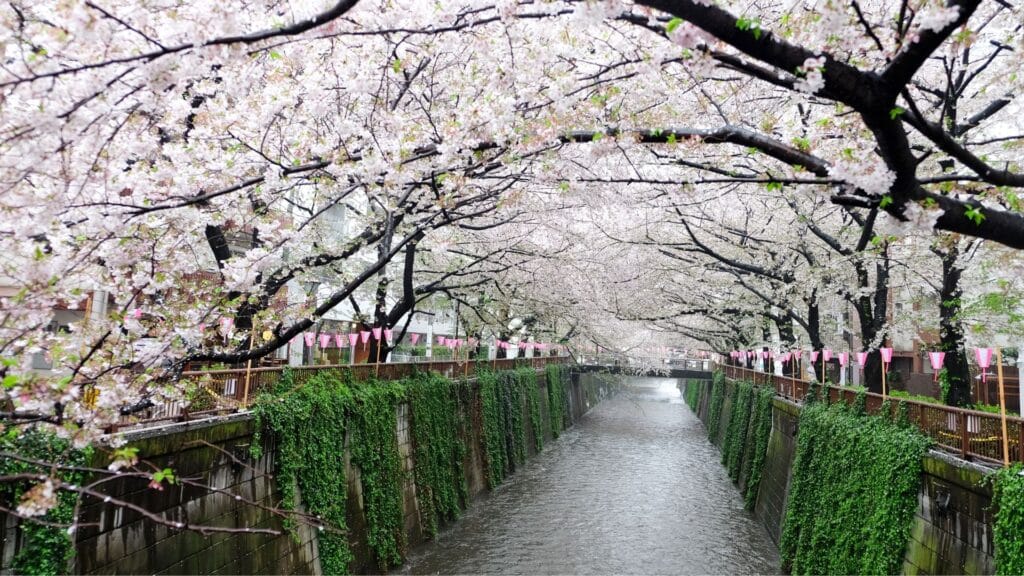
Nakameguro is sleek, stylish, and effortlessly laid-back — the kind of place where Tokyo’s cool crowd goes to chill out. It’s most famous for its canal, which is absolutely stunning during cherry blossom season, when the entire stretch becomes a tunnel of soft pink petals.
But honestly, it’s worth visiting year-round. Outside of sakura season, the canal becomes a peaceful riverside walking path, perfect for slow strolls and quiet moments. It’s lined with trees, little cafes, and the occasional local walking their well-dressed dog — very Tokyo.
What makes Nakameguro stand out is the atmosphere. It’s trendy, but not in-your-face trendy. Think minimalist coffee shops, concept boutiques, and modern bakeries with queues out the door — but also hidden bars, record stores, and tiny galleries tucked down side streets.
Every shopfront feels curated, but it still manages to keep that lived-in, community feel. You could easily spend an afternoon just wandering, sipping coffee, and popping into whatever catches your eye.
And when the sun goes down, Nakameguro doesn’t lose its charm. The area lights up softly, and the nightlife is intimate rather than intense — ideal for date nights or low-key hangs. There are wine bars, craft beer spots, and tiny izakayas with five seats and handwritten menus.
7. Nakano (中野)
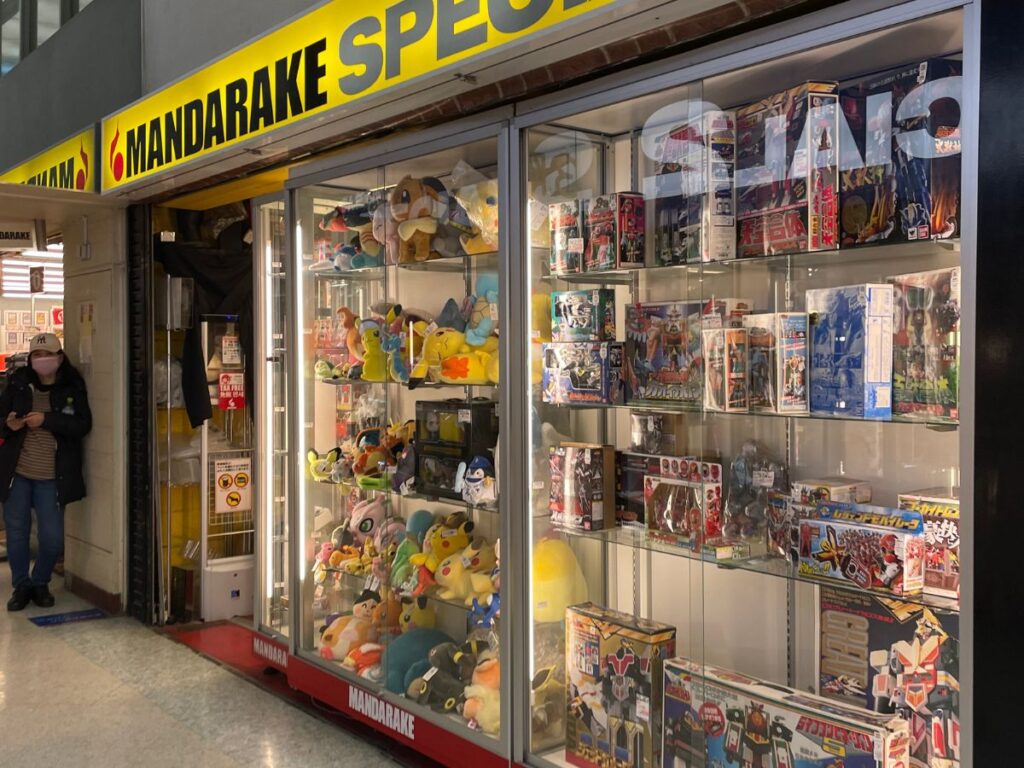
Nakano feels like stepping into a slightly weirder, slightly more compact version of Tokyo — in the best way possible. Just one train stop from the madness of Shinjuku, this neighbourhood has a more local, slightly retro vibe that makes it instantly likeable.
It’s best known for Nakano Broadway, a quirky shopping complex packed with all things anime, manga, and collectibles. The building itself is a bit of a time capsule, but inside it’s a maze of niche shops where you can find everything from vintage Godzilla figurines to out-of-print manga and idol merch you didn’t know existed.
Wandering around Nakano Broadway is a full-on sensory experience. Some shops are overflowing with action figures stacked from floor to ceiling, others feel more like private museums, with rare items displayed like precious artefacts.
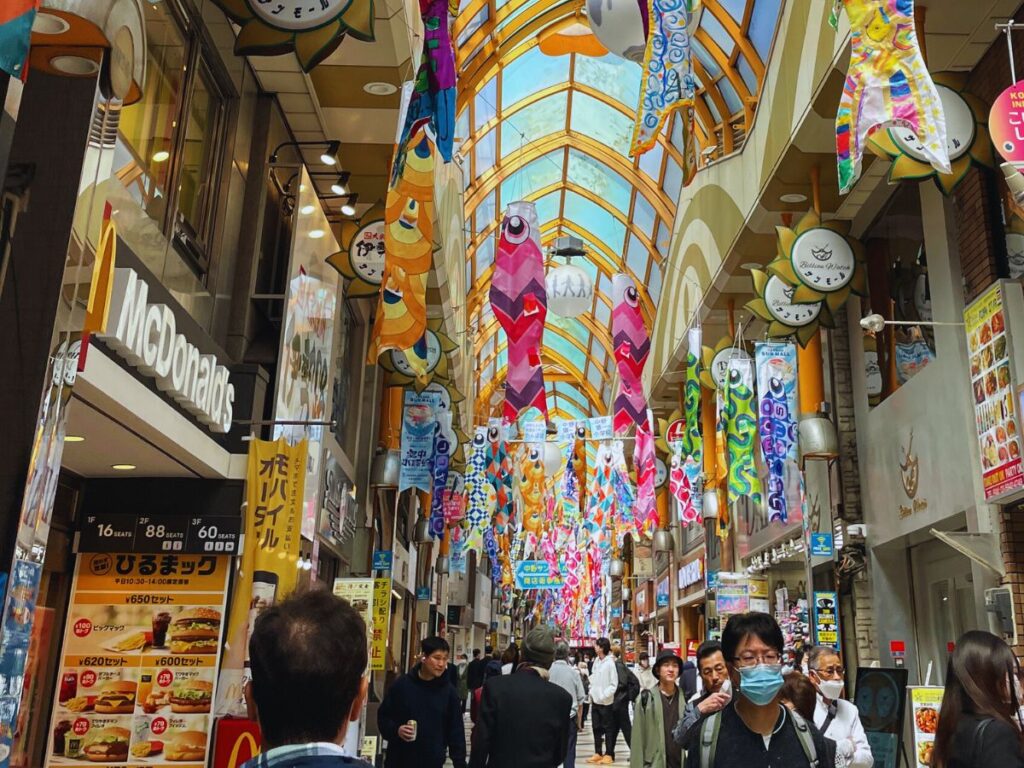
And it’s not just for hardcore collectors — even if you don’t know your Gundam from your Ghibli, there’s something fun about getting lost in the chaos. The basement floor also has a bit of a local food market feel, with bakeries, juice bars, and places to grab a cheap bite before heading back up to explore more.
The backstreets around the station are packed with yakitori joints, standing bars, second-hand shops and old-school cafes. Come for the otaku culture, stay for the cheap beer, hidden record stores, and side alleys that never quite lead where you expect them to.
8. Daikanyama (代官山)

Daikanyama is the kind of place where you’ll find boutique wine shops next to high-end baby stores, and locals walking tiny dogs in designer harnesses. The vibe here is more “quiet confidence” than “look at me”, and it’s a refreshing break from the noise and neon of the bigger districts. If your ideal day includes good coffee, a bit of people-watching, and a browse through beautiful books, you’ll fit right in.
One of the biggest draws here is the Daikanyama T-Site complex, home to Tsutaya Books — easily one of the most stunning bookstores in the city. It’s not just about reading, though. You can flick through art magazines with a coffee in hand, wander into the record section for a listen, or rent a bike and ride through the neighbourhood like a local. The area around T-Site is full of design-focused shops, concept stores, and cafes that all seem to nail the “simple but perfect” aesthetic.
Daikanyama doesn’t have major tourist attractions, but that’s kind of the point. It’s more about soaking up the atmosphere, browsing without an agenda, and maybe buying a very fancy candle you absolutely don’t need.
It’s a great spot if you want a quieter day without leaving the city, and it’s easy to pair with nearby areas like Nakameguro or Ebisu. Come here when you’re ready to swap crowds for calm, and chaos for curated charm.
9. Jiyugaoka (自由が丘)

Jiyugaoka is peak wholesome Tokyo. It’s sweet, photogenic, and has that “perfect little day out” energy that makes you want to slow down and explore.
The streets are walkable and dotted with dessert cafes, lifestyle shops, and boutiques selling things you definitely don’t need but suddenly have to own — handmade ceramics, floral notebooks, imported teas, you name it. The whole place has a soft, pastel aesthetic, with a little bit of European village influence thrown in for good measure.
One of the most popular mini-attractions here is La Vita — a tiny Venice-inspired corner complete with a canal, footbridge, and even a gondola (no, really). It’s wildly kitsch but somehow still charming, and it sums up Jiyugaoka’s playful vibe perfectly.
It’s also a neighbourhood that really shows Tokyo’s softer side. You’ll see groups of stylish older ladies out for lunch, mums pushing prams into airy cafes, and couples picking out sweets to bring home. There’s a sense of calm here that makes it super appealing after a few days in the louder parts of the city.
10. Sangenjaya (三軒茶屋)
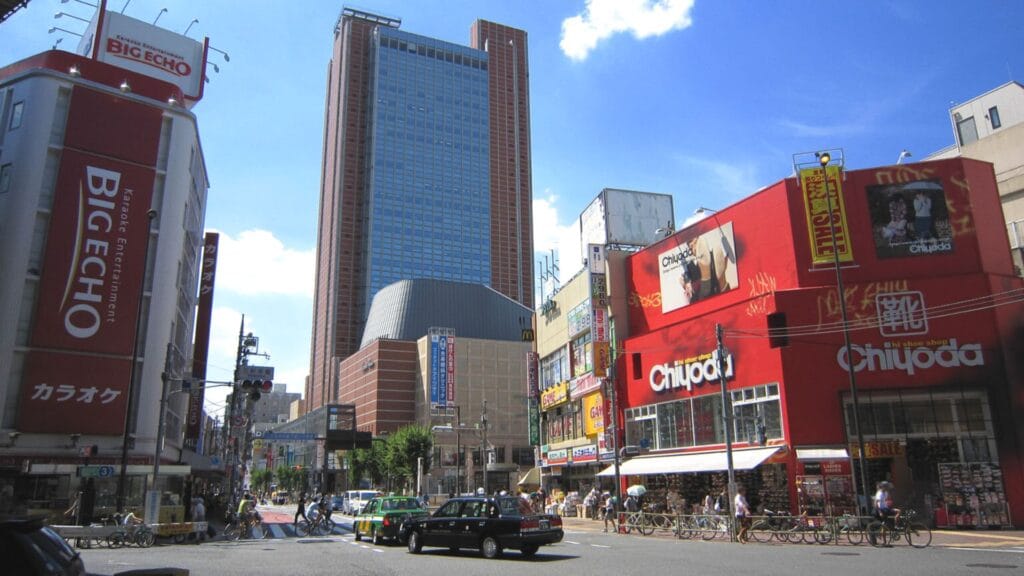
Sangenjaya, or just Sancha if you want to sound like a local, is one of those neighbourhoods that doesn’t try to impress — but totally does anyway.
This is a place where life feels lived-in: vending machines hum on street corners, the sound of chatter spills out of standing bars, and you’ll see locals walking home from work with convenience store snacks and a can of beer in hand. One of the best things to do in Sancha is simply wander with no plan. The main streets are lively enough, but the real magic’s in the alleys.
Tamagawa-dori is a good starting point — a long stretch filled with izakayas, ramen joints, tiny music bars, and places you wouldn’t even notice unless you looked twice. Some restaurants only seat five people. Some are so local that menus are handwritten in marker pen. But they’re always buzzing with conversation, cheap drinks, and really good food.
By day, Sangenjaya has a quieter, more neighbourhood feel — think cosy coffee shops, bakeries, and independent boutiques scattered around. There’s also the Carrot Tower, a slightly odd but endearing orange high-rise where you can go up to the top for a free view of the Tokyo skyline.
11. Kagurazaka (神楽坂)
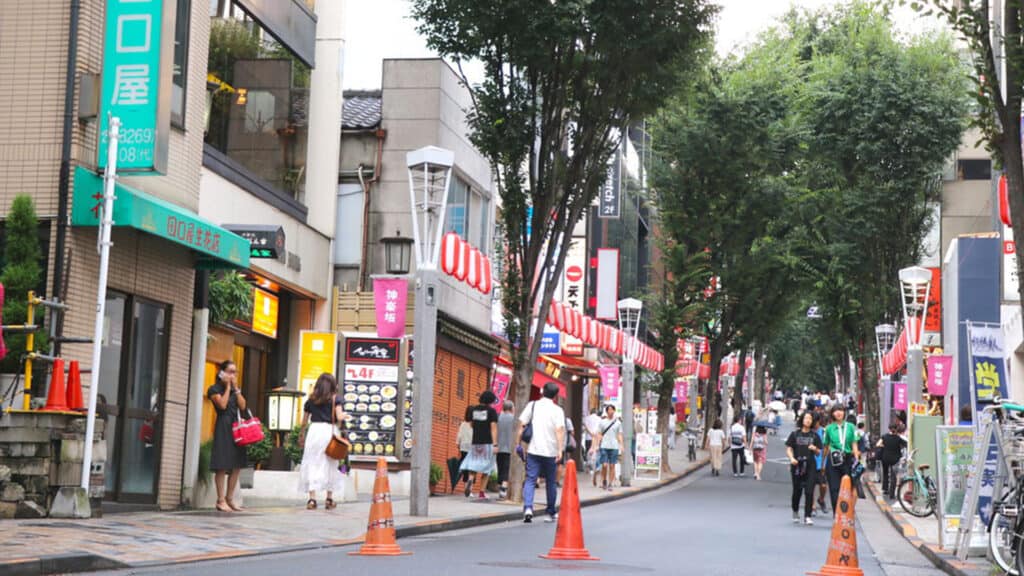
Kagurazaka is one of Tokyo’s most underrated gems — a neighbourhood that feels like a secret, even though it’s hiding in plain sight. Just a short walk from Iidabashi Station, this former geisha district is full of old-world charm and quiet sophistication.
Its narrow, winding alleys are made for wandering, lined with stone paths, old wooden houses, and tucked-away shrines that make you feel like you’ve stepped into another time. But instead of freezing in history, Kagurazaka blends the past with just the right amount of modern flair.
There’s a subtle French influence here that gives the area a unique flavour — literally. Thanks to its long-standing expat community, Kagurazaka is known for its cosy bistros, patisseries, and wine bars, many of which are nestled between traditional ryotei (Japanese restaurants) and hidden izakayas.
The contrast is part of what makes it so charming: you can sip espresso on a terrace, then walk five minutes and find yourself in front of a bamboo-lined alleyway leading to a lantern-lit sushi spot with no sign. It’s romantic, mysterious, and perfect for slow, aimless afternoons.
More than anything, Kagurazaka is a place to explore with curiosity. Skip the map, follow your instincts, and see where the narrow paths lead. You might find a jazz café with two tables, or a handmade ceramics shop hidden behind a curtain. It’s not the kind of neighbourhood that shouts for attention — it whispers. And if you take your time, it’s full of tiny, unforgettable moments.
12. Ryogoku (両国)
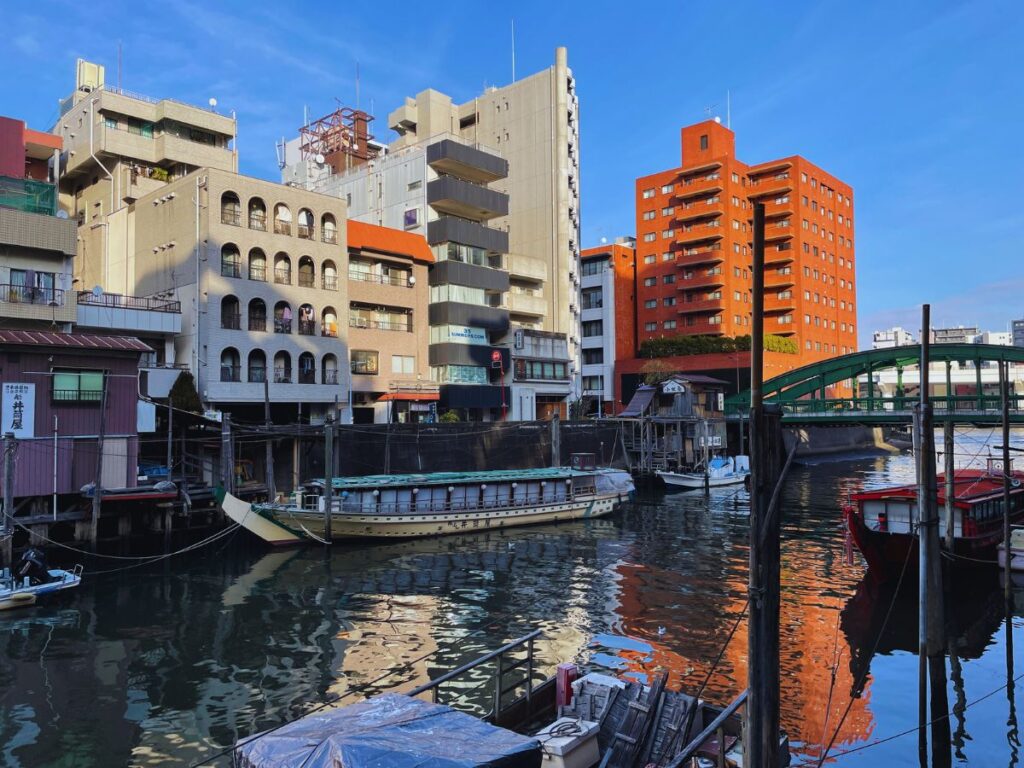
Ryogoku is the home of sumo wrestling in Japan, and honestly, it wears that title with pride. Walking through the area, you’ll spot larger-than-life posters of sumo champions, traditional training stables tucked into quiet streets, and even real wrestlers strolling around in their yukata on the way to practice.
The Ryogoku Kokugikan (the main sumo stadium) is the centrepiece — and if your trip lines up with one of the grand tournaments, it’s absolutely worth grabbing a ticket, even if you’ve never seen a match before.
But there’s more to Ryogoku than just sumo. The area is steeped in Edo-period history, with museums, old gardens, and traditional architecture that give you a taste of what Tokyo looked like centuries ago. The Edo-Tokyo Museum (currently under renovation, but usually a must-visit) tells the story of how Tokyo transformed over time, and the Sumida Hokusai Museum nearby is a beautiful tribute to the ukiyo-e master whose wave print you’ve definitely seen on a tote bag somewhere. It’s a neighbourhood that gives you a proper cultural hit — in a way that’s super walkable and easy to explore.
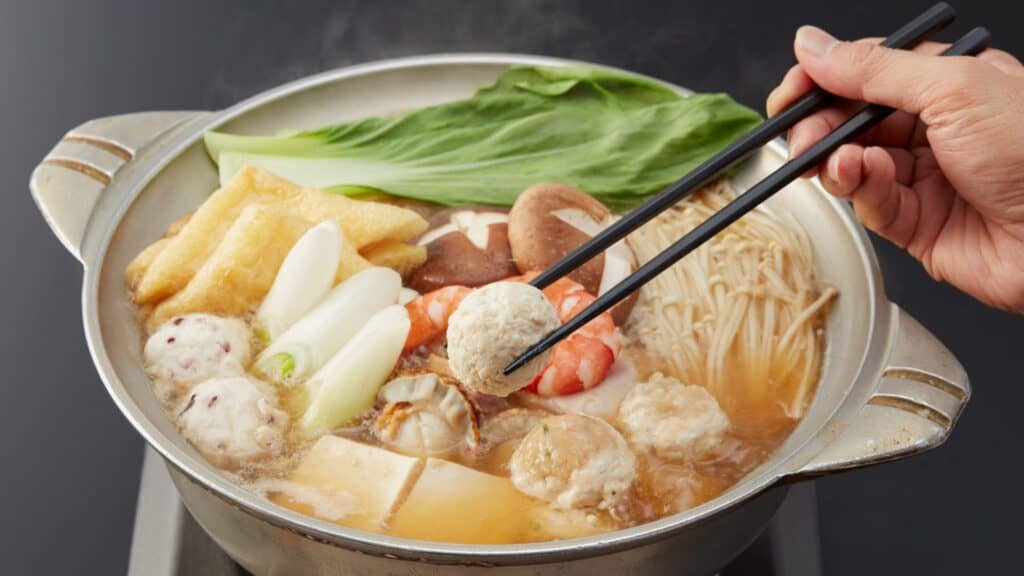
Ryogoku also happens to be a sneaky-good food spot. If you’re hungry, don’t skip out on chanko nabe — the hotpot-style dish traditionally eaten by sumo wrestlers. There are loads of places around the station serving it, from casual joints to more polished sit-down spots. It’s hearty, delicious, and way more fun than your usual tourist lunch.
Ryogoku might not have the trendiness of somewhere like Nakameguro or Daikanyama, but it delivers something just as special — a strong sense of history, culture, and real Tokyo flavour.
Experience Tokyo With These Local Neighbourhoods
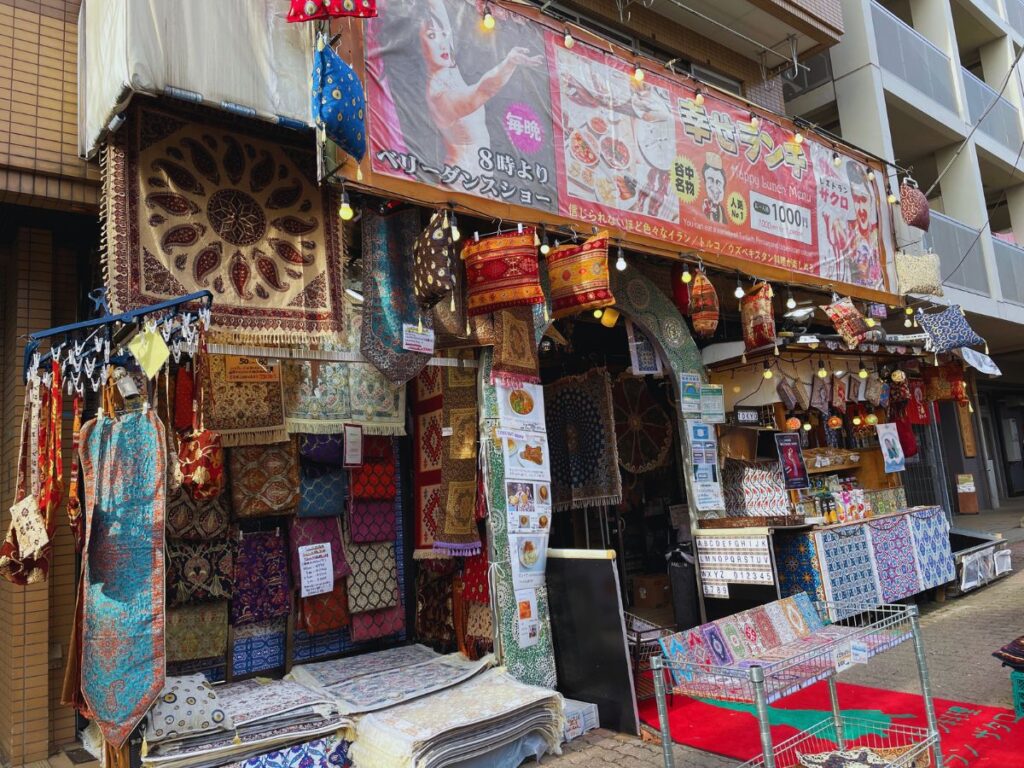
Tokyo gets a reputation for being all neon signs, bullet trains, and sensory overload — and while that side of it absolutely exists, there’s so much more hiding just a few stations away from the chaos.
Once you slip into the quieter neighbourhoods, the city starts to feel a little more personal. You’ll find places that move at a gentler pace, where people linger over coffee, where the streets are lined with tiny shops that feel like they were made for wandering into on a whim.
If you’re keen to explore beyond the obvious but don’t know where to start, we’ve got you. Our Japan Travel Planner is here to help you skip the tourist traps and craft a trip that actually fits your vibe.
From iconic sights to secret local gems, we’ll build an itinerary that hits the good stuff and gives you space to explore at your own pace. Forget the stress mess — pack your curiosity, and let us do the rest.

